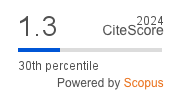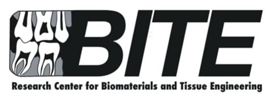Social determinants and oral health among cement industry workers
Downloads
Background: Cement industry workers are exposed to significant oral health risks due to hazardous conditions, but the role of social determinants in this context is not well understood. Purpose: This study investigates the association between social determinants and oral health among factory and office workers in the cement industry. Methods: A cross-sectional study was conducted at PT. Semen Padang, West Sumatra, Indonesia. A stratified random sample of 83 workers was selected. Social determinants were assessed using World Health Organization (WHO) 2013 and Perceived Stress Scale (PSS-10) questionnaires, while oral health was evaluated using decayed, missing, and filled teeth index (DMF-T), community periodontal index (CPI), and inspection. Ten calibrated dentists conducted dental examinations. Multiple linear regression was used for data analysis. Results: Factory workers exhibited higher rates of dental caries (95.83%), periodontal disease (87.50%), abrasion (91.67%), and attrition (87.50%), compared to office workers. Social determinants significantly associated with dental caries in factory workers included age, sugar intake, tooth-brushing frequency, and last dental check-up (r2 = 0.573), while only sugar intake was associated with caries in office workers (r2 = 0.290). For periodontal disease determinants associated with age, psychosocial factors, and smoking (r2 = 0.558) were significant in factory workers, whereas, in office workers, age, sugar intake, tooth-brushing frequency, last dental check-up, and smoking were significantly associated (r2 = 0.870). Age was the only significant determinant of abrasion and attrition in both groups. Conclusion: Social determinants influence oral health among cement industry workers, especially factory workers, due to physiological and psychological changes caused by working conditions. However, office workers also face oral health challenges due to poor oral health behaviors.
Downloads
Armenti K, Sweeney M, Lingwall C, Yang L. Work: a social determinant of health worth capturing. Int J Environ Res Public Health. 2023; 20(2): 1199. doi: https://doi.org/10.3390/ijerph20021199
Silver SR, Sweeney MH, Sanderson WT, Pana‐Cryan R, Steege AL, Quay B, Carreón T, Flynn MA. Assessing the role of social determinants of health in health disparities: The need for data on work. Am J Ind Med. 2024; 67(2): 129–42. doi: https://doi.org/10.1002/ajim.23557
Tellez M, Zini A, Estupiñan-Day S. Social determinants and oral health: an update. Curr Oral Heal Reports. 2014; 1(3): 148–52. doi: https://doi.org/10.1007/s40496-014-0019-6
Rodriguez JL, Thakkar-Samtani M, Heaton LJ, Tranby EP, Tiwari T. Caries risk and social determinants of health: A big data report. J Am Dent Assoc. 2023; 154(2): 113–21. doi: https://doi.org/10.1016/j.adaj.2022.10.006
Vitosyte M, Puriene A, Stankeviciene I, Rimkevicius A, Trumpaite-Vanagiene R, Aleksejuniene J, Stangvaltaite-Mouhat L. Oral health among adult residents in Vilnius, Lithuania. Int J Environ Res Public Health. 2022; 19(1): 582. doi: https://doi.org/10.3390/ijerph19010582
Novrinda H, Han D-H, Jung‐Choi K, Ryu J-I. Neo‐Marxian social class inequalities in oral health among the South Korean population. Community Dent Oral Epidemiol. 2019; 47(2): 162–70. doi: https://doi.org/10.1111/cdoe.12439
Zaitsu T, Kanazawa T, Shizuma Y, Oshiro A, Takehara S, Ueno M, Kawaguchi Y. Relationships between occupational and behavioral parameters and oral health status. Ind Health. 2017; 55(4): 381–90. doi: https://doi.org/10.2486/indhealth.2017-0011
Irie K, Tsuneishi M, Saijo M, Suzuki C, Yamamoto T. Occupational difference in oral health status and behaviors in Japanese workers: a literature review. Int J Environ Res Public Health. 2022; 19(13): 8081. doi: https://doi.org/10.3390/ijerph19138081
Irie K, Yamazaki T, Yoshii S, Takeyama H, Shimazaki Y. Is there an occupational status gradient in the development of periodontal disease in Japanese workers? A 5-year prospective cohort study. J Epidemiol. 2017; 27(2): 69–74. doi: https://doi.org/10.1016/j.je.2016.09.002
Abdelhamid A. Effect of exposure to portland cement dust on the periodontal status and on the outcome of non-surgical periodontal therapy. Int J Health Sci (Qassim). 2016; 10(3): 339–52. pubmed: https://pubmed.ncbi.nlm.nih.gov/27610057/
Ghasemi H, Darmohammadi R, Namdari M, Ghorbani Z. Oral health outcomes and shift working among male workers: A cross-sectional survey. Chaubal T, editor. PLoS One. 2022; 17(10): e0275924. doi: https://doi.org/10.1371/journal.pone.0275924
Sharma A, Thomas S, Dagli R, Solanki J, Arora G, Singh A. Oral health status of cement factory workers, Sirohi, Rajasthan, India. J Heal Res Rev. 2014; 1(1): 15. doi: https://doi.org/10.4103/2394-2010.143320
Elagib MFA, Ghandour IA, Abdel Rahman ME, Baldo SMH, Idris AM. Influence of cement dust exposure on periodontal health of occupational workers. Toxin Rev. 2021; 40(4): 1496–504. doi: https://doi.org/10.1080/15569543.2020.1737824
Abdullah MI, Ali SM, Jassim JA. Periodontal status of smoker and nonsmoker between the workers at El Kubaisa factory of cement. Iraqi Dent J. 2017; 39(2): 82. doi: https://doi.org/10.26477/idj.v39i2.127
Abdulla MI, Al-Waheb AM. Occupational dental wear among El-Kubasis cement factory workers : an observational study. J Baghdad Coll Dent. 2014; 26(2): 135–7. doi: https://doi.org/10.12816/0015210
Kecklund G, Axelsson J. Health consequences of shift work and insufficient sleep. BMJ. 2016; 355: i5210. doi: https://doi.org/10.1136/bmj.i5210
Proper KI, van de Langenberg D, Rodenburg W, Vermeulen RCH, van der Beek AJ, van Steeg H, van Kerkhof LWM. The relationship between shift work and metabolic risk factors: a systematic review of longitudinal studies. Am J Prev Med. 2016; 50(5): e147–57. doi: https://doi.org/10.1016/j.amepre.2015.11.013
Torquati L, Mielke GI, Brown WJ, Burton NW, Kolbe-Alexander TL. Shift work and poor mental health: a meta-analysis of longitudinal studies. Am J Public Health. 2019; 109(11): e13–20. doi: https://doi.org/10.2105/AJPH.2019.305278
Dall’Ora C, Ball J, Recio-Saucedo A, Griffiths P. Characteristics of shift work and their impact on employee performance and wellbeing: A literature review. Int J Nurs Stud. 2016; 57: 12–27. doi: https://doi.org/10.1016/j.ijnurstu.2016.01.007
Ishizuka Y, Yoshino K, Takayanagi A, Sugihara N, Maki Y, Kamijyo H. Comparison of the oral health problems and behavior of male daytime‐only and night‐shift office workers: An Internet survey. J Occup Health. 2016; 58(2): 155–62. doi: https://doi.org/10.1539/joh.15-0146-OA
Park JS, Jeong Y, Jung J, Ryu J-J, Lim H-K, Jung S-K, Song I-S. Shift work sleep disorder is closely associated with an increased risk for periodontal disease. J Clin Periodontol. 2021; 48(8): 1066–75. doi: https://doi.org/10.1111/jcpe.13508
Jung S-K, Lim H-K, Jeong Y, Lee SJ, Park JS, Song I-S. Influence of shift work on periodontitis according to the occupation group. Sci Rep. 2023; 13(1): 17921. doi: https://doi.org/10.1038/s41598-023-45222-z
Roestamadji RI, Nastiti NI, Surboyo MDC, Irmawati A. The risk of night shift workers to the glucose blood levels, saliva, and dental caries. Eur J Dent. 2019; 13(03): 323–9. doi: https://doi.org/10.1055/s-0039-1697211
Janapareddy K, Parlapalli V, Pydi S, Pottem N, Chatti P, Pallekonda AP. Oral health status and oral health-related quality of life (OHRQoL) among steel factory workers of Visakhapatnam-A cross-sectional study. J Fam Med Prim Care. 2020; 9(10): 5309. doi: https://doi.org/10.4103/jfmpc.jfmpc_877_20
Aldosari M, Mendes S da R, Aldosari A, Aldosari A, de Abreu MHNG. Factors associated with oral pain and oral health-related productivity loss in the USA, National Health and Nutrition Examination Surveys (NHANES), 2015–2018. Qian J, editor. PLoS One. 2021; 16(10): e0258268. doi: https://doi.org/10.1371/journal.pone.0258268
Peres MA, Macpherson LMD, Weyant RJ, Daly B, Venturelli R, Mathur MR, Listl S, Celeste RK, Guarnizo-Herreño CC, Kearns C, Benzian H, Allison P, Watt RG. Oral diseases: A global public health challenge. Lancet. 2019; 394(10194): 249–60. doi: https://doi.org/10.1016/S0140-6736(19)31146-8
Blacker A, Dion S, Grossmeier J, Hecht R, Markle E, Meyer L, Monley S, Sherman B, VanderHorst N, Wolfe E. Social determinants of health—an employer priority. Am J Heal Promot. 2020; 34(2): 207–15. doi: https://doi.org/10.1177/0890117119896122b
Hulley SB, Cummings SR, Browner WS, Grady DG, Newman TB. Designing clinical research. 4th ed. Philadelphia: Lippincott Williams & Wilkins; 2013. p. 79. web: https://books.google.co.id/books?id=_b62TBnoppYC&source=gbs_navlinks_s
Olczak-Kowalczyk D, Turska A, Gozdowski D, Kaczmarek U. Dental caries level and sugar consumption in 12-year-old children from Poland. Adv Clin Exp Med. 2016; 25(3): 545–50. doi: https://doi.org/10.17219/acem/61615
Moynihan PJ, Kelly SAM. Effect on caries of restricting sugars intake: systematic review to inform WHO guidelines. J Dent Res. 2014; 93(1): 8–18. doi: https://doi.org/10.1177/0022034513508954
Hancock S, Zinn C, Schofield G. The consumption of processed sugar‐ and starch‐containing foods, and dental caries: a systematic review. Eur J Oral Sci. 2020; 128(6): 467–75. doi: https://doi.org/10.1111/eos.12743
Feldens CA, Pinheiro LL, Cury JA, Mendonça F, Groisman M, Costa RAH, Pereira HC, Vieira AR. Added sugar and oral health: a position paper of the brazilian academy of dentistry. Front Oral Heal. 2022; 3: 869112. doi: https://doi.org/10.3389/froh.2022.869112
Mahboubi Z, Pakdaman A, Yazdani R, Azadbakht L, Montazeri A. Dietary free sugar and dental caries in children: A systematic review on longitudinal studies. Heal Promot Perspect. 2021; 11(3): 271–80. doi: https://doi.org/10.34172/hpp.2021.35
Moores CJ, Kelly SAM, Moynihan PJ. Systematic review of the effect on caries of sugars intake: ten-year update. J Dent Res. 2022; 101(9): 1034–45. doi: https://doi.org/10.1177/00220345221082918
Almerich-Silla J, Alminana-Pastor P, Boronat-Catala M, Bellot-Arcis C, Montiel-Company J. Socioeconomic factors and severity of periodontal disease in adults (35-44 years). A cross sectional study. J Clin Exp Dent. 2017; 9(8): 0–0. doi: https://doi.org/10.4317/jced.54033
Dubar M, Clerc-Urmès I, Baumann C, Clément C, Alauzet C, Bisson C. Relations of psychosocial factors and cortisol with periodontal and bacterial parameters: a prospective clinical study in 30 patients with periodontitis before and after non-surgical treatment. Int J Environ Res Public Health. 2020; 17(20): 7651. doi: https://doi.org/10.3390/ijerph17207651
Ahmed N, Arshad S, Basheer SN, Karobari MI, Marya A, Marya CM, Taneja P, Messina P, Yean CY, Scardina GA. Smoking a dangerous addiction: a systematic review on an underrated risk factor for oral diseases. Int J Environ Res Public Health. 2021; 18(21): 11003. doi: https://doi.org/10.3390/ijerph182111003
Warreth A, Abuhijleh E, Almaghribi MA, Mahwal G, Ashawish A. Tooth surface loss: A review of literature. Saudi Dent J. 2020; 32(2): 53–60. doi: https://doi.org/10.1016/j.sdentj.2019.09.004
Kanaan M, Brabant A, Eckert GJ, Hara AT, Carvalho JC. Non-biological and biological risk indicators for tooth wear outcomes in adults. Caries Res. 2022; 56(4): 407–18. doi: https://doi.org/10.1159/000527091
Prakash AR, Reddy AVS, RajiniKanth M, Sreenath G, Hussain SMK, Harsha DPS. Attrition – A criteria in estimating the age. J Forensic Dent Sci. 2021; 13(April): 24–9. doi: https://doi.org/10.18311/jfds/13/1/2021.699
Thippanna RK, Ramu VC. Prevalence of dental attrition and its severity in relation to age and gender: a clinical study. CODS J Dent. 2017; 9(1): 16–21. doi: https://doi.org/10.5005/jp-journals-10063-0027
Chemelo VDS, Né YG de S, Frazão DR, Souza-Rodrigues RD de, Fagundes NCF, Magno MB, Silva CMT da, Maia LC, Lima RR. Is there association between stress and bruxism? A systematic review and meta-analysis. Front Neurol. 2020; 11: 590779. doi: https://doi.org/10.3389/fneur.2020.590779
Polmann H, Réus JC, Massignan C, Serra‐Negra JM, Dick BD, Flores‐Mir C, Lavigne GJ, De Luca Canto G. Association between sleep bruxism and stress symptoms in adults: A systematic review and meta‐analysis. J Oral Rehabil. 2021; 48(5): 621–31. doi: https://doi.org/10.1111/joor.13142
Souza RV, Sarmento RA, de Almeida JC, Canuto R. The effect of shift work on eating habits: a systematic review. Scand J Work Environ Health. 2019; 45(1): 7–21. doi: https://doi.org/10.5271/sjweh.3759
Kharbanda OP, Priya H, Mishra D, Gupta S, Ivaturi A, Ravi P, Bhatia A, Prasad A, Ali A, Haldane D. Oral health status and treatment needs of government employees in New Delhi. Workplace Health Saf. 2019; 67(12): 573–8. doi: https://doi.org/10.1177/2165079919852119
Ali AST, Varghese SS, Shenoy RP. Association between cervical abrasion, oral hygiene practices and buccolingual dimension of tooth surfaces: a cross-sectional study. J Pharm Bioallied Sci. 2022; 14(Suppl 1): S403–9. doi: https://doi.org/10.4103/jpbs.jpbs_692_21
Okura K, Shigemoto S, Suzuki Y, Noguchi N, Omoto K, Abe S, Matsuka Y. Mandibular movement during sleep bruxism associated with current tooth attrition. J Prosthodont Res. 2017; 61(1): 87–95. doi: https://doi.org/10.1016/j.jpor.2016.06.003
Vieira AR, Scariot R, Gerber JT, Arid J, Küchler EC, Sebastiani AM, Palinkas M, Díaz-Serrano K V., Torres CP, Regalo SCH, Nelson-Filho P, Bussaneli DG, Deeley K, Modesto A. Bruxism throughout the lifespan and variants in MMP2, MMP9 and COMT. J Pers Med. 2020; 10(2): 44. doi: https://doi.org/10.3390/jpm10020044
Rees JS, Somi S. A guide to the clinical management of attrition. Br Dent J. 2018; 224(5): 319–23. doi: https://doi.org/10.1038/sj.bdj.2018.169
Copyright (c) 2025 Dental Journal

This work is licensed under a Creative Commons Attribution-ShareAlike 4.0 International License.
- Every manuscript submitted to must observe the policy and terms set by the Dental Journal (Majalah Kedokteran Gigi).
- Publication rights to manuscript content published by the Dental Journal (Majalah Kedokteran Gigi) is owned by the journal with the consent and approval of the author(s) concerned.
- Full texts of electronically published manuscripts can be accessed free of charge and used according to the license shown below.
- The Dental Journal (Majalah Kedokteran Gigi) is licensed under a Creative Commons Attribution-ShareAlike 4.0 International License

















